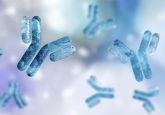5. Do you follow a one assay approach or two assay approach for your ADA bioanalytical assays? What are the pros and cons?

Christina Satterwhite: “The one assay approach is followed for ADA (anti-drug antibody) bioanalytical assays, however, the feasibility of this approach would need to be evaluated in method development (e.g., determination of the screening and confirmatory cut-point, precision, drug tolerance, sensitivity and selectivity etc.) prior to method validation.
The similarity of the biosimilar and the originator should be evaluated and well documented in method development experiments. The biosimilar reagents should be used for the screening, confirmatory and titration assays. The generation of the positive control (PC) antibodies used in the immunogenicity assay can be acquired for both the biosimilar and the originator drugs. If both PCs are generated then they should be evaluated and shown to have similar sensitivities if utilized in the assay. At minimum, the biosimilar should be used to generate the positive control antibodies. There are similar advantages to using the one assay approach for the ADA bioanalytical assays as with the PK bioanalytical assays. A caveat to using the biosimilar reagents for the ADA bioanalytical assays is that any ADAs that are unique to the innovator would not be detected.”
Arno Kromminga: “One ADA assay using the biosimilar as capture antigen should be used as long as it is demonstrated that the ADA is able to detect antibodies directed against the biosimilar and the reference similarly. The latter aspect is extremely important as this demonstrates biosimilarity. Of course, any ADA assay should fulfill regulatory expectation, e.g. sensitivity, specificity, selectivity, drug and target interferences.”





